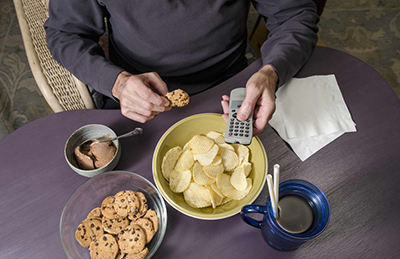In How To Start – A Beginner Prepper Food Supply List we spoke about how to make the list and how to start prepping. Now, in How To Collect The Best Food For Preppers, we discuss the types of food that are best for long term storage for BOBs and vehicles.
Right from the start, I will suggest that you:
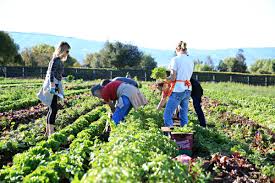
- Buy direct from the farmer, if you can, to be assured of the best quality fresh produce.
- Clean and dry the fruit and veggies yourself
- Buy free-range chickens and grass-fed beef or venison to dry, make pemmican or biltong
- Buy whole grain in bulk and package it for storage yourself. Whole grain lasts longer than flour etc and you can mill it later.
- Keep a few chickens and rabbits for eggs, meat and skins.
Many will say that they do not know how but what better time to learn. Better to learn now before your lives depend on it.
Skills will be more important than cash when SHTF
Bryanb
What To Consider
You planned your list, now it is time to start putting the items together and in this article, we discuss How To Collect The Best Food For Preppers. Avoid tinned foods and packaged soups etc. they are not as nutritious as you think.
So, for your Bug out bag, you need food that is:
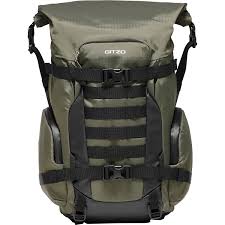
- light
- compact (boxes take up unnecessary room)
- nutritional
- quick to prepare ( preferably no cooking with little or no implements required)
- high in protein and carbs
- Low waste disposal ( you don’t want to leave evidence of your passing by leaving tins, boxes, plastic bags etc.)
One of the main food sources I use in my bug out bag is Supplements. I Use one that is commonly used by Sportsmen and women around the world for stamina and strength.
For Your Vehicle/Trailer
Travelling in a vehicle, you will have fewer issues than when walking/running but there will still be constraints. The heavier your load, the more fuel you will need. Space, although much more, will still be an issue so the above list will be most applicable to a vehicle as well. You will be packing for a longer period so you will need more “stuff” so you will still need to watch the size of your items.
I personally like my food vacuum packed as it tends to take up less space in flat packages than in boxes or buckets etc. The smaller packets can fit into those little nooks and crannies in the vehicle, I even vacuum pack my packets of seed etc.
Types Of Food
I like to categorise foods into 4 types. There are many lists of food categories but this list is what I use specifically with foods for preppers
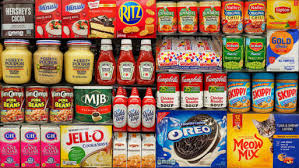
- `Natural Food – This would be fruit or veggies etc. that you pick directly, cook/prepare and consume, like Apples, carrots, and freshly killed venison ( you note I do not add the meat bought at your local butcher or supermarket).
- Minimally processed foods — such as bagged Lettice leaves, fresh-cut vegetables and various roasted nuts — are most often just pre-prepped for convenience.
- Processed Foods – These foods have ingredients (sweeteners, spices, oils, colourants and preservatives) added for flavour, colour, texture etc… These include foods like packaged pasta sauce, mayonnaise, yoghurt, cake premixes and the like. My rule of thumb comes into play here.
- Ultra-processed foods or Ready-to-eat foods – (Avoid these foods) These are foods that are “Concocted” by food scientists, Foods such as crackers, chips and deli meat, flavoured milk, juices, coffees, instant tea and the list goes on and on. These foods can have many preservatives, flavourings and colourants and are more heavily processed.
What The Food Industry Would Have You Believe
Feeding the world
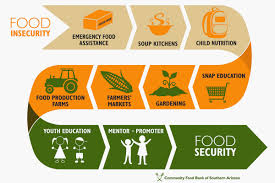
For starters, processed foods contribute to total food security and nutrition security. They’re cheaper and prevent spoiling in times of scarcity. One of the keys to teaching villages to feed themselves is by teaching them how to process food.
Processing can also improve quality, availability, sustainability, convenience, and can even enhance nutrient content. This all leads to safe and affordable food entering areas of poverty and malnutrition.
Now we all know the story of what goes into our processed food (and even some of our unprocessed food – like meat) so I am not going to go into it here, but the truth of it is that processed food is not good for you.
It is said by many Doctors that processed food causes many ailments and diseases, like cancer. so my advice is to stay away.
Stay away from those shiny, packaged, nothing-to-do-with-nature products found at fast-food restaurants and gas station mini-marts.
Stick To Natural Food
Easily said but what is natural nowadays? Well, my simple rule of thumb is, if it contains more than one ingredient, it is not natural.
So this would rule out most of the foods found today. It is for this reason I am such a fan of learning to make your own prepper’s foods from natural foods for a number of reasons:
- You control the quality of the food that you start with.
- You control what goes into the mix.
- You package it according to your needs.
- You know how old it is and can rotate your stock.

I am not a fan of canning, pickling etc. for prepping if you might need to leave in a hurry, as it requires bottles that are expensive, heavy and breakable. The methods and results are sound for preserving your own produce etc. if you are storing it in a pantry at home.
Drying food is much more effective for weight and space-saving. Make your own foods like:-
- dried vegetables
- dried fruit
- dried eggs
- dried herbs
- pemmican (dried grass-fed beef or venison mixed with fat. lasts 10 years and more)
- biltong
- bokkoms
- Kefir – for baking, making cheese and sourdough.
Types Of Natural Foods
What’s the difference between processed and unprocessed food? The short answer is those whole foods are minimally processed, and the vitamins and nutrients are still intact. The food is coming to you in its natural (or nearly natural) state.
You may be tempted to purchase boxed meals but your body will need balance and fuel for the journey, esp if on foot. You’re not going to get it by turning to sugar and salt. Carbs and protein are the answer. Not one but both.
Whole Food – What Is It?

In today’s meals, you find very few whole foods. In your grains, they have removed the germ to manufacture other products such as wheat germ oil. We, therefore, have lost a portion of the nutritional value of the grain.
How to Identify Whole Foods
Whole foods come straight from the earth and remain in that natural state. A good rule of thumb to use is – if it has a nutrition label, something has been added or altered. Do you find bunches of bananas with labels?
The Boxed bananas have usually been irradiated and washed/sprayed before being placed in the box with the label.
Don’t believe fish is your friend! Unless you find genuine wild-caught fish such as salmon it is probably farmed and fed grains that fill them with omega 6 instead of omega 3.
Beans and legumes are your friends. You can prepare them and serve them in so many ways. Seeds and nuts like pecans and walnuts are whole foods. Apples, berries, plums, spinach, and kale fall under this category as well. Grass-fed beef, free-range chicken and grains like quinoa and millet are also considered “whole.”
Here are a few items to look for on your next shopping trip:
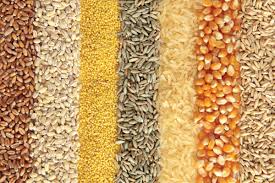
- Fresh fruits and veggies (without labels)
- Quality whole grains
- White rice (brown rice has too much oil and does not last as long as white rice)
- Legumes
- Wild fish (not the farmed stuff, even if it is much cheaper)
- Organic, free-range chicken (to be dried)
- Grass-fed beef or venison (to be processed by you when you make pemmican or biltong). True ready to eat meals.
Dry foods are defined as goods that can be stored at room temperature, low-risk food.
Dried Foods
Drying food is the oldest way of preserving food. Drying food to preserve it is based on the concept of lowering the availability of water for the activity of microorganisms and enzymes in food.
In this process, the moisture content is lowered to a point at which the activities of food spoilage and food-poisoning microorganisms are inhibited, which in turn increases the shelf life of foods. Furthermore, changes in the texture of the product become harder and the mass-to-volume ratio of the product decreases.
Preparing Food For The Drier
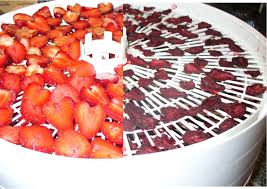
- buy or pick the freshest, highest quality fruits and vegetables.
- Peel and trim away damaged portions.
- Grate or cut into halves, strips, or slices about 2mm to 4mm thick that will dry readily.
- Blanch vegetables by heating them enough to neutralize enzymes. If you omit this step, or inadequately blanch vegetables, they will have poor flavour and colour. Blanch in steam or in hot water. Water blanching is quicker but may leach out colour and nutrients compared to steam blanching. Follow the same times as used when freezing vegetables. It is not necessary to chill blanched vegetables. Drain them well and spread them onto a drying rack in the oven or food dehydrator.
- Pretreat most fruits by dipping them to slow down browning. Use 1/2 teaspoon Vitamin C (ascorbic acid) per quart of cold water. Dip fruit for 1 minute, then drain and put on a rack to begin drying.
Drying takes time and is really a slow process, so don’t start it if you don’t have lots of time. Drying in an oven takes longer and uses more electricity, making it expensive. Don’t speed up the drying time by turning up the oven.
All you will do is case harden the fruit. It will be dry and hard on the outside and moist on the inside. This will end up going mouldy in storage.
Food Driers
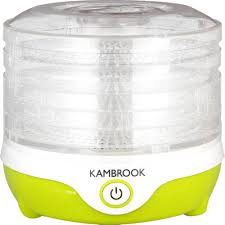
If you decide to go the dried food route, it would be advisable to invest in a drier by either making one or buying one. The purchased driers are expensive and do a small volume at once. this makes drying a little more costly, but still cheaper than using the oven and better results than the microwave oven.
Make your own drier is not difficult nor expensive, although you could make it both of these if you try and be too elaborate. The great thing is that you can determine the size of the drier to make drying more efficient.
I bought a little drier to experiment with and it has done us well for a number of years. It works so well that I have invested in a good vacuum sealer and we have vacuum-packed most of our dried produce. We then freeze it for 3 weeks before storing it. This ensures all the “gogatjies” are done for.
I even vacuum pack my maize meal and Flour, freeze it and then pack it in the trailer. So to my rice, legumes and everything else I can find. My pemican I keep in a breathable material bag. I have used some of it 18 months after making it and the pemmican is really good in soups and stews.
Buying Is Not Always Best – Prepare Your Own
As with most of my articles, I try to show how you can do things yourself instead of buying. We are not all able to afford the prepping supplies that are advertised, and there is really no need. You can make it yourself in most instances and besides being cheaper, you are learning a skill that may become lifesaving if SHTF.
The best prep you can do now is to learn how to do things without the modern amenities which will be in short supply…Skills will be in great demand.
Your opinion counts! please leave your comments in the comments section below.

If you have any questions, please ask them here.

“It is better to have prepared and never to need it than to be unprepared and be in desperate need of it”.
Be Aware. Be Safe. Be Prepared!

